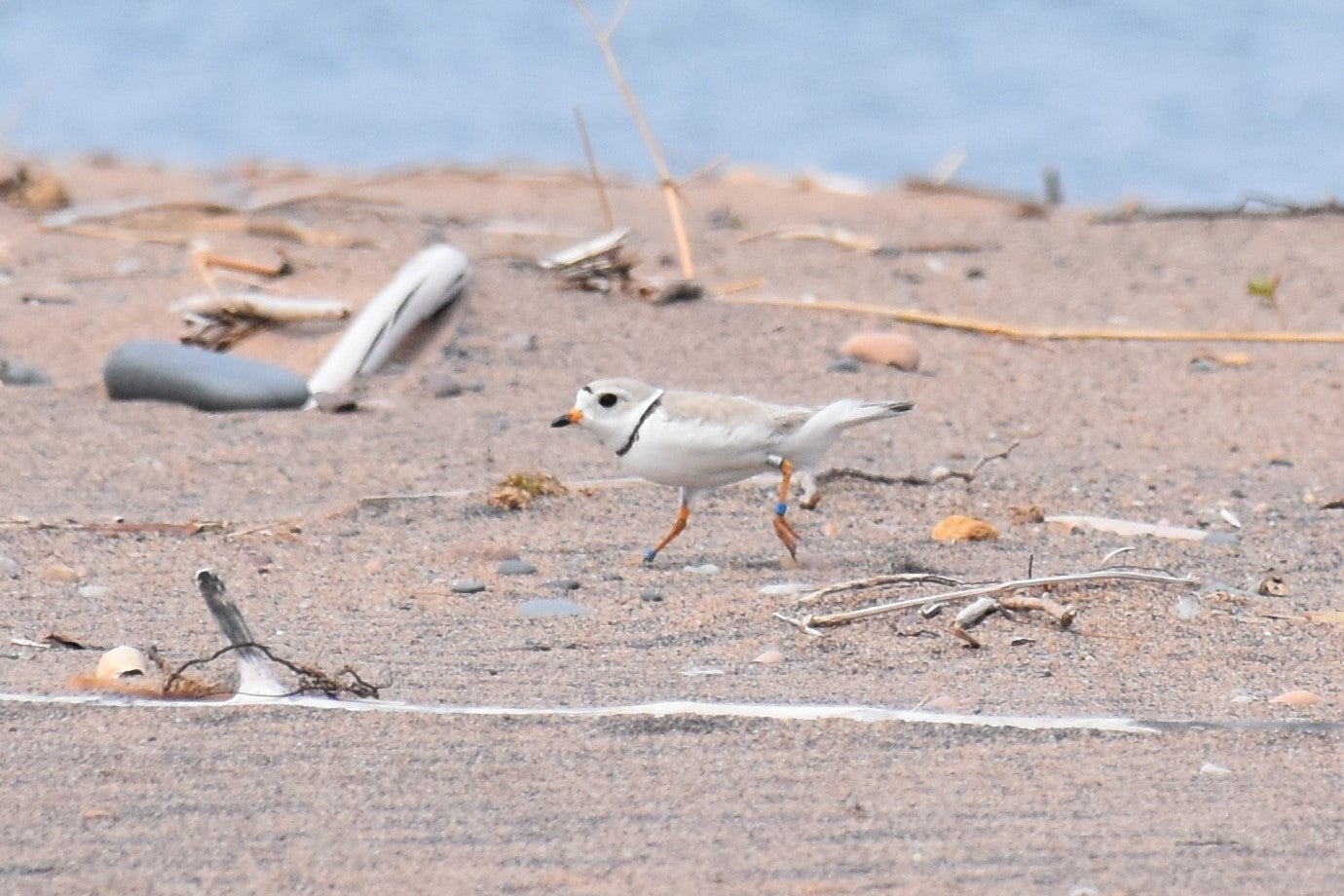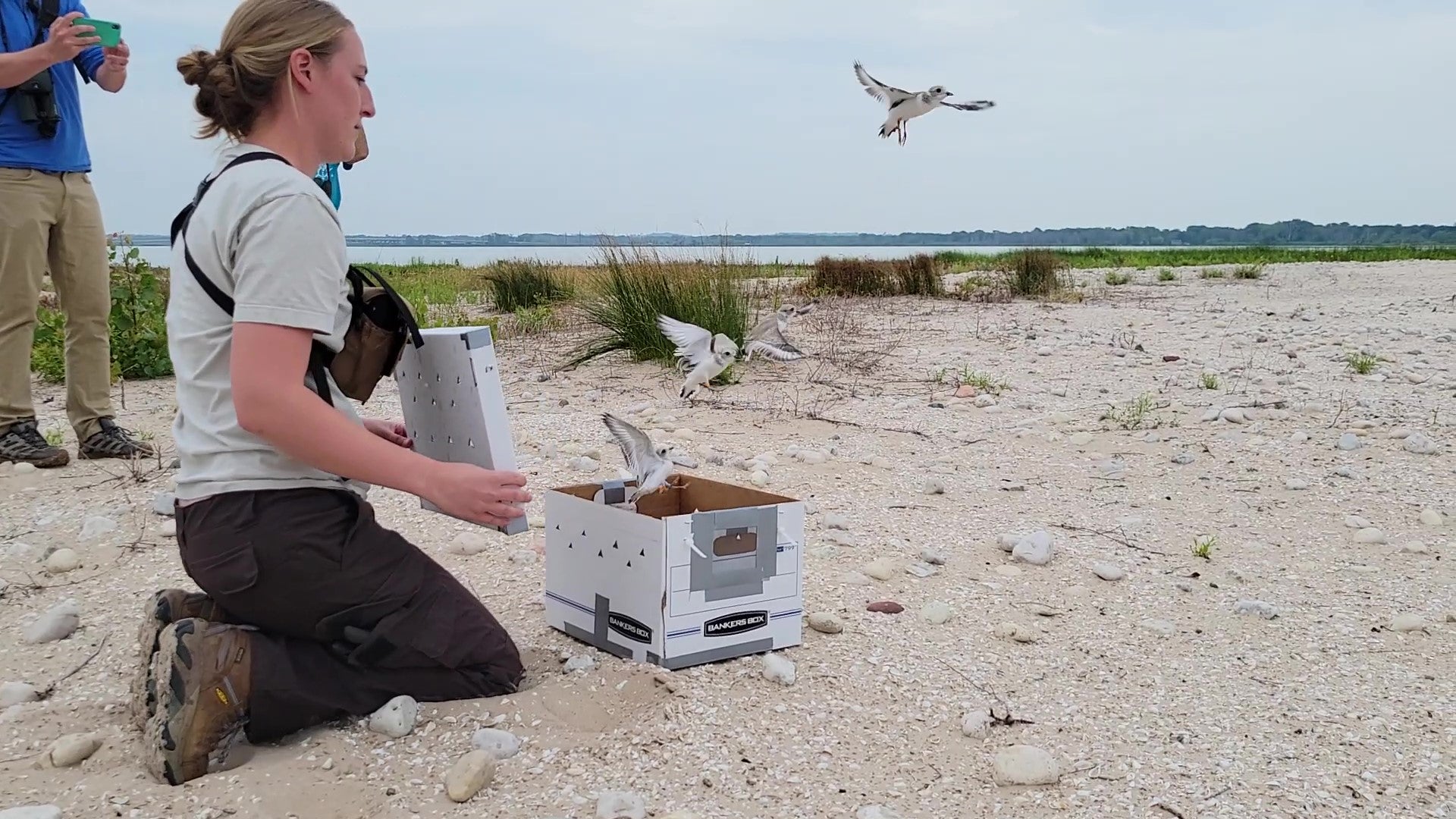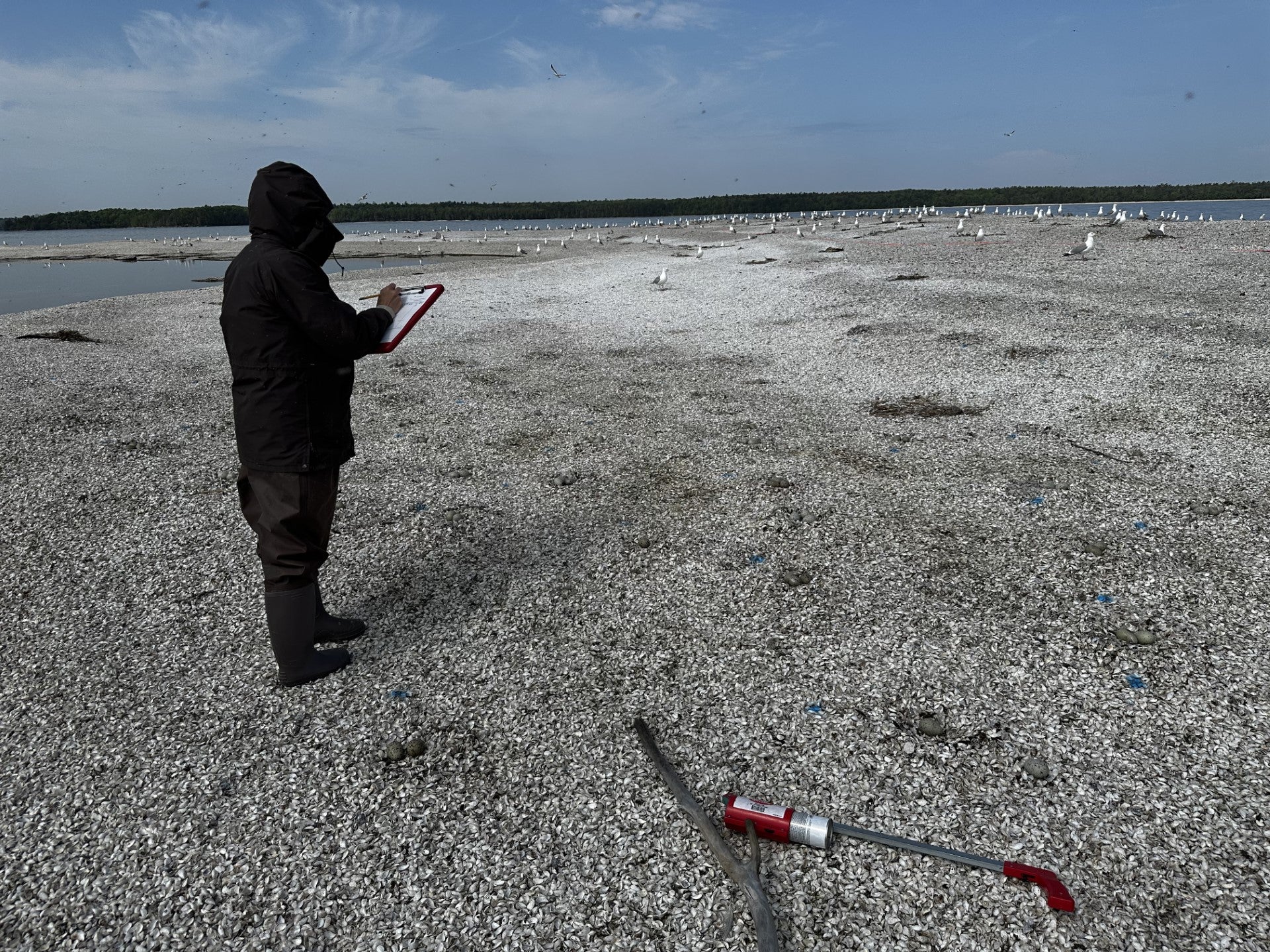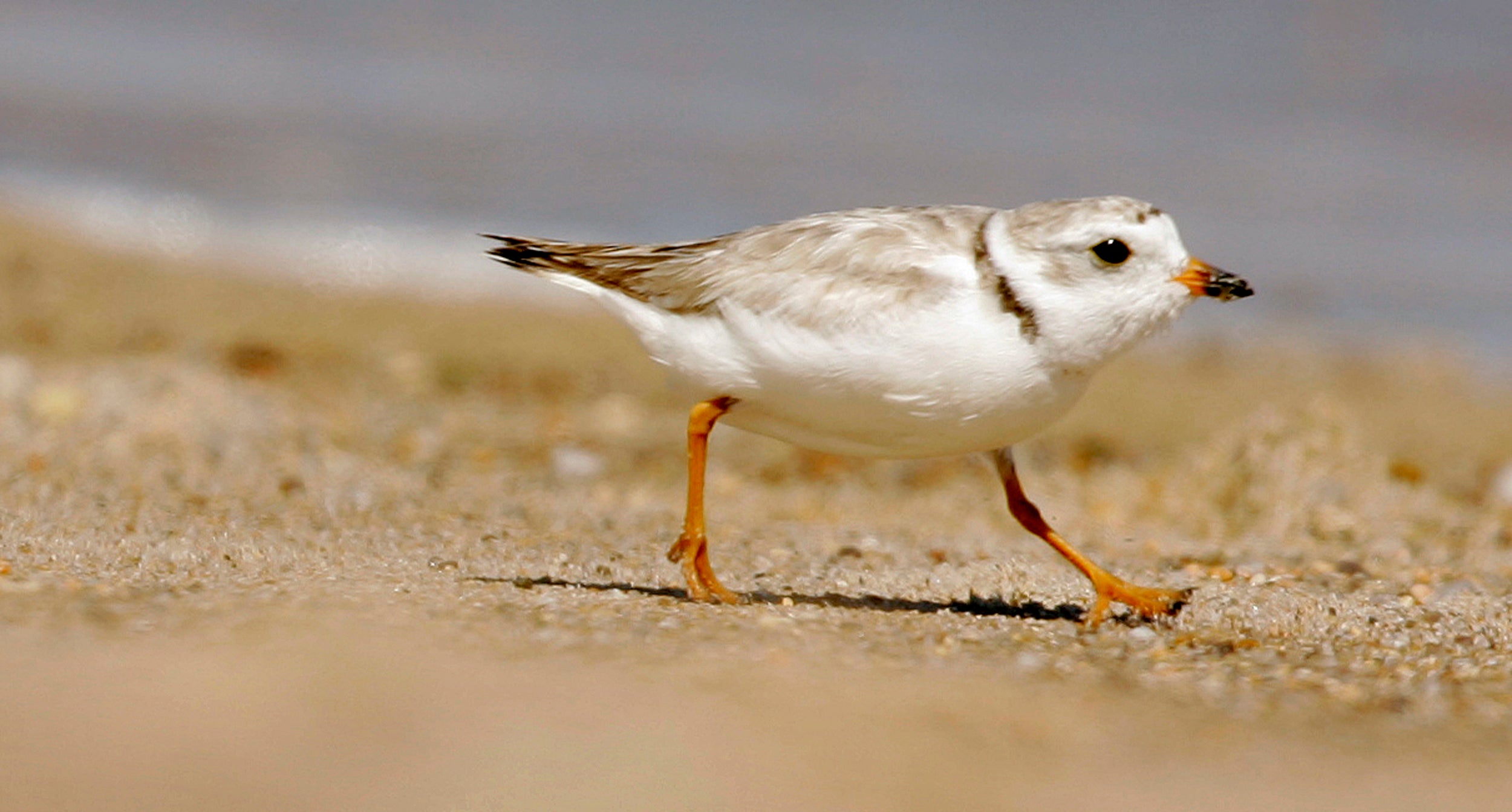An endangered shorebird is having a record year in Wisconsin. Federal, state and tribal partners working on the recovery of piping plover saw a record number of chicks take flight.
“One of our most successful years ever where we had a total of 10 pairs in the state that produced 26 young,” said Sumner Matteson, avian ecologist with the Wisconsin Department of Natural Resources.
Piping plover were first listed as endangered across the Great Lakes in 1986 after suitable shoreline habitat for the bird had declined. The shorebirds prefer to nest on sandy dunes and cobblestone beaches. There were just 16 pairs at the time of listing.
Stay informed on the latest news
Sign up for WPR’s email newsletter.
This year, officials recorded 71 nesting pairs across the Great Lakes, said Reena Bowman, a biologist with the U.S. Fish and Wildlife Service. The number is up slightly from the 67 pairs discovered last year. However, Bowman said numbers are down from a record 76 pairs recorded in 2017, adding that high lake levels reduced the amount of habitat across the lakes.
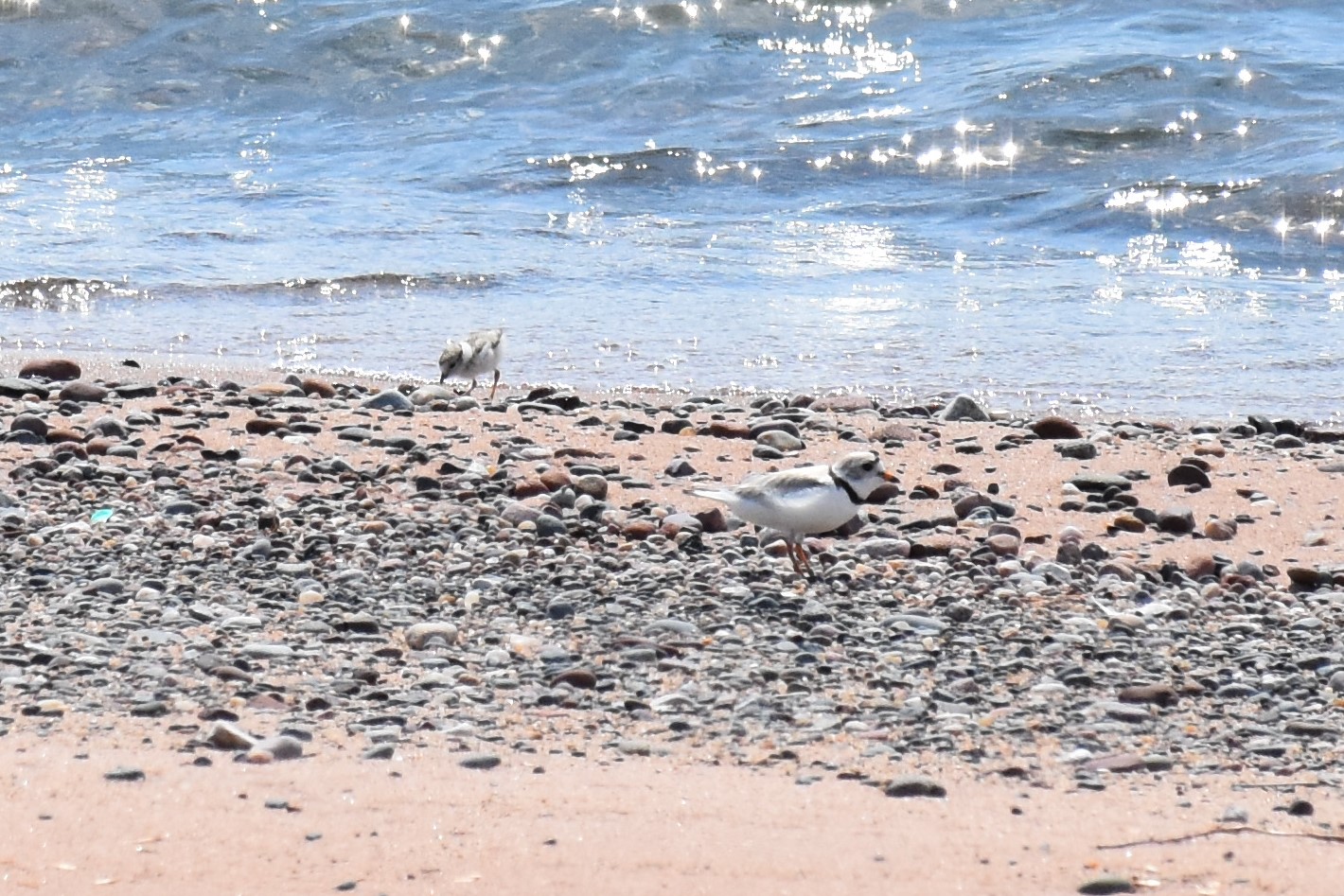
Photo courtesy of Alice Ahlfield, NPS Biological Technician
“Then, we had quite a lot of severe storms this summer that kind of caused some nest washouts,” said Bowman. “There’s definitely some issues this year, but overall in Wisconsin we had like the best year that we’ve ever had.”
The Cat Island Chain in lower Green Bay saw a record five pairs since piping plover first began nesting there in 2016.
“We had a really good year at Cat Island, which is a beneficial dredge disposal project in lower Green Bay,” said Bowman. “Because it’s not a natural type of shoreline, it wasn’t really impacted by the high water levels.”
Five pairs were also spotted in the Apostle Islands National Lakeshore. For the first time, piping plovers nested on two new islands this year — Stockton and Outer islands, said to National Park Service biologist Peggy Burkman.
“We have had piping plovers show up at Outer Island, but we’ve never had — to our knowledge — successful nesting,” she said.
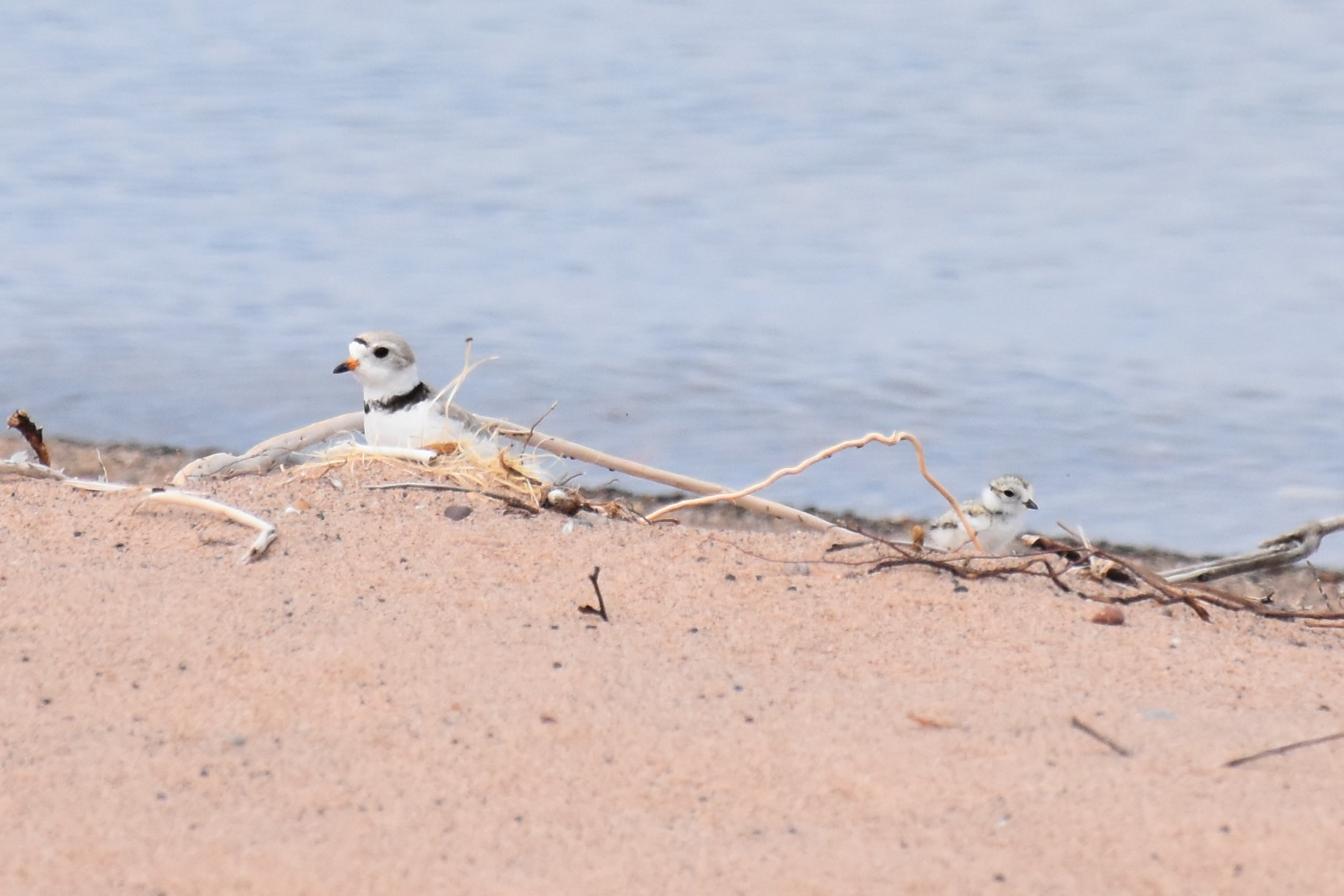
Photo courtesy of Alice Ahlfield, NPS Biological Technician
The park works closely with the Bad River Band of Lake Superior Chippewa to promote the bird’s recovery on the islands. This year, a piping plover monitor with the tribe alerted park officials to an abandoned nest.
“She ended up putting the eggs in an incubator, and they spent the night in the incubator on the island. Then, Bad River transported them off,” said Burkman.
The eggs were then transported to a captive rearing station in Michigan where they later hatched and were released on Whitefish Point in Michigan’s Upper Peninsula.
The rescue is one of many ways in which officials are working to bolster the bird’s population. In Superior, state and federal officials will examine a new potential nesting site for piping plover this week that was created on Wisconsin Point facing Allouez Bay. The beach nourishment project was designed and built by the U.S. Army Corps of Engineers.
“It’s going to be potentially a very attractive site for piping plovers,” said Matteson. “We’ll find out next spring and probably the year after how successful it will be. Even if it doesn’t attract piping plovers, it’s going to be an outstanding shorebird migratory stopover site.”
Piping plover once nested on Wisconsin point in 1977, Matteson said. The birds have been spotted in the Twin Ports, but piping plover haven’t nested in the area as it’s faced challenges from foot traffic, dogs and severe storms.
Wisconsin Public Radio, © Copyright 2024, Board of Regents of the University of Wisconsin System and Wisconsin Educational Communications Board.

